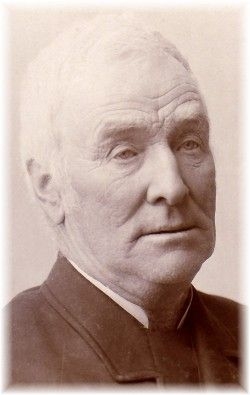Tue 21 Feb 2006
Why John Miller Emigrated to Canada
Posted by Jim under George Miller/Riggfoot, History, Hugh Miller, John Miller/Thistle Ha', Lore, William Miller SrComments Off on Why John Miller Emigrated to Canada
Audio recorded in 2000 by Hugh Miller in the last few months of his life.
Following the Napoleonic Wars, the Scottish economy was depressed. Land owners were merging their tenants’ centuries-old subsistence farms into large tracts of land suitable for more profitable livestock farming. Many tenants left their farms in the so-called Lowland Clearances. Land owners were merciless to tenants unwilling to leave their plots; demanding ever increasing rents even in years when crops/prices were poor.
By the 1830s, William Miller could only see a bleak future for his children in Scotland. His younger brother George left for Canada in 1832, and undoubtedly sent back word that the Canadian farms were much larger and much more fertile, and that established settlers were prosperous. So William Miller’s oldest child John, having finished his schooling at age 17, left Dumfriesshire and arrived at his Uncle George’s farm in Markham, Ontario on June 1, 1835.
 John Miller (pictured) and his descendants had a tremendous influence on the purebred livestock industry in Canada and the United States in the 19th and early 20th centuries. The Millers were renowned innovators, importers, breeders, exhibitors, judges and promoters of Shorthorn cattle, Clydesdale horses, Berkshire and Yorkshire pigs, and Shropshire, Leicester and Cotswold sheep.
John Miller (pictured) and his descendants had a tremendous influence on the purebred livestock industry in Canada and the United States in the 19th and early 20th centuries. The Millers were renowned innovators, importers, breeders, exhibitors, judges and promoters of Shorthorn cattle, Clydesdale horses, Berkshire and Yorkshire pigs, and Shropshire, Leicester and Cotswold sheep.